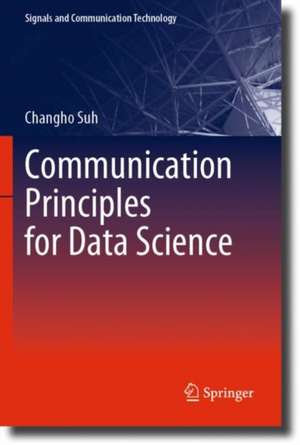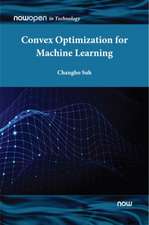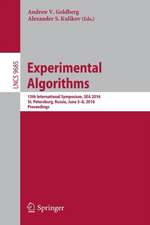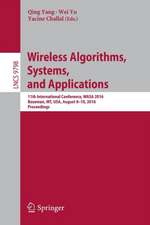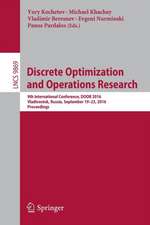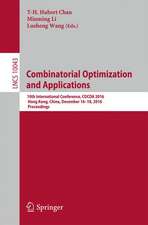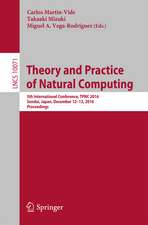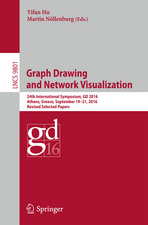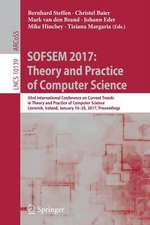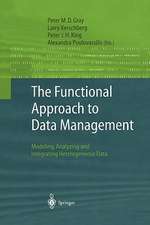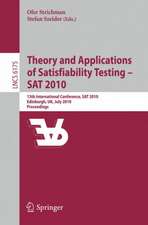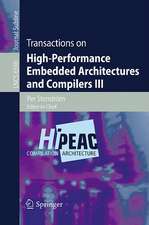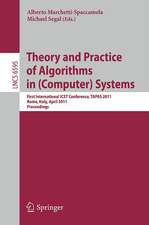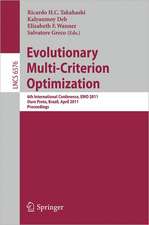Communication Principles for Data Science: Signals and Communication Technology
Autor Changho Suhen Limba Engleză Paperback – 15 iun 2024
This book introduces the basic principles underlying the design and analysis of the digital communication systems that have heralded the information revolution. One major goal of the book is to demonstrate the role of the digital communication principles in a wide variety of data science applications, including community detection, computational biology, speech recognition and machine learning.
One defining feature of this book is to make an explicit connection between the communication principles and data science problems, as well as to succinctly deliver the “story” of how the communication principles play a role for trending data science applications. All the key “plots” involved in the story are coherently developed with the help of tightly coupled exercise problem sets, and the associated fundamentals are explored mostly from first principles. Another key feature is that it includes programming implementation of a variety of algorithms inspired by fundamentals, together with a brief tutorial of the used programming tools. The implementation is based on Python and TensorFlow. This book does not follow a traditional book-style organization, but is streamlined via a series of lecture notes that are intimately related, centered around coherent storylines and themes. It serves as a textbook mainly for a junior- or senior-level undergraduate course, yet is also suitable for a first-year graduate course. Readers benefit from having a good background in probability and random processes, and basic familiarity with Python. But the background can be supplemented by almost self-contained materials, as well as by numerous exercise problems intended for elaborating on non-trivial concepts. In addition, Part III for data science applications should provide motivation and insights to students and even professional scientists who are interested in the field.
One defining feature of this book is to make an explicit connection between the communication principles and data science problems, as well as to succinctly deliver the “story” of how the communication principles play a role for trending data science applications. All the key “plots” involved in the story are coherently developed with the help of tightly coupled exercise problem sets, and the associated fundamentals are explored mostly from first principles. Another key feature is that it includes programming implementation of a variety of algorithms inspired by fundamentals, together with a brief tutorial of the used programming tools. The implementation is based on Python and TensorFlow. This book does not follow a traditional book-style organization, but is streamlined via a series of lecture notes that are intimately related, centered around coherent storylines and themes. It serves as a textbook mainly for a junior- or senior-level undergraduate course, yet is also suitable for a first-year graduate course. Readers benefit from having a good background in probability and random processes, and basic familiarity with Python. But the background can be supplemented by almost self-contained materials, as well as by numerous exercise problems intended for elaborating on non-trivial concepts. In addition, Part III for data science applications should provide motivation and insights to students and even professional scientists who are interested in the field.
| Toate formatele și edițiile | Preț | Express |
|---|---|---|
| Paperback (1) | 338.92 lei 3-5 săpt. | +23.61 lei 7-11 zile |
| Springer Nature Singapore – 15 iun 2024 | 338.92 lei 3-5 săpt. | +23.61 lei 7-11 zile |
| Hardback (1) | 511.92 lei 3-5 săpt. | |
| Springer Nature Singapore – 14 iun 2023 | 511.92 lei 3-5 săpt. |
Din seria Signals and Communication Technology
- 18%
 Preț: 952.89 lei
Preț: 952.89 lei - 18%
 Preț: 1559.80 lei
Preț: 1559.80 lei - 17%
 Preț: 361.80 lei
Preț: 361.80 lei - 18%
 Preț: 811.61 lei
Preț: 811.61 lei - 15%
 Preț: 585.26 lei
Preț: 585.26 lei - 18%
 Preț: 727.97 lei
Preț: 727.97 lei - 15%
 Preț: 585.90 lei
Preț: 585.90 lei -
 Preț: 393.35 lei
Preț: 393.35 lei - 20%
 Preț: 1002.73 lei
Preț: 1002.73 lei - 15%
 Preț: 641.71 lei
Preț: 641.71 lei - 18%
 Preț: 1579.66 lei
Preț: 1579.66 lei - 18%
 Preț: 896.08 lei
Preț: 896.08 lei - 18%
 Preț: 847.11 lei
Preț: 847.11 lei - 18%
 Preț: 1234.77 lei
Preț: 1234.77 lei - 18%
 Preț: 905.54 lei
Preț: 905.54 lei - 15%
 Preț: 646.43 lei
Preț: 646.43 lei - 20%
 Preț: 662.48 lei
Preț: 662.48 lei - 15%
 Preț: 641.20 lei
Preț: 641.20 lei - 18%
 Preț: 1847.84 lei
Preț: 1847.84 lei - 18%
 Preț: 946.24 lei
Preț: 946.24 lei - 18%
 Preț: 1241.10 lei
Preț: 1241.10 lei - 20%
 Preț: 649.43 lei
Preț: 649.43 lei - 20%
 Preț: 993.28 lei
Preț: 993.28 lei - 18%
 Preț: 940.57 lei
Preț: 940.57 lei - 18%
 Preț: 1389.30 lei
Preț: 1389.30 lei - 20%
 Preț: 1003.50 lei
Preț: 1003.50 lei - 18%
 Preț: 953.52 lei
Preț: 953.52 lei - 20%
 Preț: 1001.16 lei
Preț: 1001.16 lei - 18%
 Preț: 1415.36 lei
Preț: 1415.36 lei - 15%
 Preț: 653.33 lei
Preț: 653.33 lei - 15%
 Preț: 645.60 lei
Preț: 645.60 lei - 15%
 Preț: 637.28 lei
Preț: 637.28 lei - 18%
 Preț: 948.79 lei
Preț: 948.79 lei - 18%
 Preț: 945.62 lei
Preț: 945.62 lei - 18%
 Preț: 836.36 lei
Preț: 836.36 lei - 18%
 Preț: 1225.46 lei
Preț: 1225.46 lei - 15%
 Preț: 635.01 lei
Preț: 635.01 lei - 15%
 Preț: 639.25 lei
Preț: 639.25 lei - 15%
 Preț: 646.30 lei
Preț: 646.30 lei - 15%
 Preț: 639.25 lei
Preț: 639.25 lei - 15%
 Preț: 712.36 lei
Preț: 712.36 lei - 20%
 Preț: 1006.12 lei
Preț: 1006.12 lei - 18%
 Preț: 970.56 lei
Preț: 970.56 lei
Preț: 338.92 lei
Preț vechi: 423.64 lei
-20% Nou
Puncte Express: 508
Preț estimativ în valută:
64.85€ • 67.72$ • 53.55£
64.85€ • 67.72$ • 53.55£
Carte disponibilă
Livrare economică 25 martie-08 aprilie
Livrare express 11-15 martie pentru 33.60 lei
Preluare comenzi: 021 569.72.76
Specificații
ISBN-13: 9789811980107
ISBN-10: 9811980101
Pagini: 283
Ilustrații: XIV, 283 p. 131 illus., 103 illus. in color.
Dimensiuni: 155 x 235 x 18 mm
Greutate: 0.52 kg
Ediția:2023
Editura: Springer Nature Singapore
Colecția Springer
Seria Signals and Communication Technology
Locul publicării:Singapore, Singapore
ISBN-10: 9811980101
Pagini: 283
Ilustrații: XIV, 283 p. 131 illus., 103 illus. in color.
Dimensiuni: 155 x 235 x 18 mm
Greutate: 0.52 kg
Ediția:2023
Editura: Springer Nature Singapore
Colecția Springer
Seria Signals and Communication Technology
Locul publicării:Singapore, Singapore
Cuprins
Preface.- Acknowledgements.- Part 1. Communication over the Gaussian channel.- Chapter 1.Overview of the book.- Chapter 2. A statistical model for additive noise channels.- Chapter 3. Additive Gaussian noise model.- Problem Set 1.- Chapter 4. Optimal receiver: maximum A Posteriori (MAP) principle.- Chapter 5. Analysis of error probability.- Chapter 6. Multiple bits transmission via pulse amplitude modulation.- Problem Set 2.- Chapter 7. Multi-shot communication.- Chapter 8. Repetition coding.- Chapter 9: Capacity of the additive white Gaussian noise channel.- Problem Set 3.- Part 2. Communication over inter-symbol interference (ISI) channels.- Chapter 10. Signal conversion from discrete to continuous time (1/2).- Chapter 11. Signal conversion from discrete to continuous time (2/2).- Chapter 12. Optimal receiver architecture.- Problem Set 4.- Chapter 13. Optimal receiver in ISI channels: maximum likelihood (ML) sequence detection.- Chapter 14. Optimal receiver in ISI channels: Viterbi algorithm.- Problem Set 5.- Chapter 15.Orthogonal frequency division multiplexing (1/3).- Chapter 16. Orthogonal frequency division multiplexing (2/3).- Chapter 17. Orthogonal frequency division multiplexing (3/3).- Problem Set 6.- Part 3.Data science applications.- Chapter 18. Community detection as a communication problem.- Chapter 19. Community detection: ML principle.- Chapter 20. Community detection: An efficient algorithm.- Chapter 21. Community detection: Python implementation.- Problem Set 7.- Chapter 22.Haplotype phasing as a communication problem.- Chapter 23. Haplotype phasing: ML principle.- Chapter 24: Haplotype phasing: An efficient algorithm.
Notă biografică
Changho Suh is an Associate Professor of Electrical Engineering at KAIST. He received the B.S. and M.S. degrees in Electrical Engineering from KAIST in 2000 and 2002 respectively, and the Ph.D. degree in EECS from UC Berkeley in 2011. From 2011 to 2012, he was a postdoctoral associate in MIT. From 2002 to 2006, he was with Samsung Electronics. He is a recipient of numerous awards in research and teaching: the 2022 Google Research Award, the 2021 James L. Massey Research & Teaching Award for Young Scholars from the IEEE Information Theory Society, the 2020 LINKGENESIS Best Teacher Award (the campus-wide Grand Prize in Teaching), the 2019 AFOSR Grant, the 2019 Google Education Grant, the 2018 IEIE/IEEE Joint Award, the 2015 IEIE Haedong Young Engineer Award, the 2015 Bell Labs Prize finalist, the 2013 IEEE Communications Society Stephen O. Rice Prize, the 2011 David J. Sakrison Memorial Prize (the best dissertation award in UC Berkeley EECS), the 2009 IEEE ISIT Best Student Paper Award, and the five Department Teaching Awards (2013, 2019, 2020, 2021, 2022). Dr. Suh is a Distinguished Lecturer of the IEEE Information Theory Society from 2020 to 2022, the General Chair of the Inaugural IEEE East Asian School of Information Theory 2021, an Associate Head of the KAIST AI Institute from 2021 to 2022, and a Member of the Young Korean Academy of Science and Technology. He is also an Associate Editor of Machine Learning for IEEE TRANSACTIONS ON INFORMATION THEORY, a Guest Editor for the IEEE JOURNAL ON SELECTED AREAS IN INFORMATION THEORY, the Editor for IEEE INFORMATION THEORY NEWSLETTER, an Area Editor for IEEE BITS the Information Theory Magazine, an Area Chair of NeurIPS 2021–2022 and a Senior Program Committee of IJCAI 2019—2021.
Textul de pe ultima copertă
This book introduces the basic principles underlying the design and analysis of the digital communication systems that have heralded the information revolution. One major goal of the book is to demonstrate the role of the digital communication principles in a wide variety of data science applications, including community detection, computational biology, speech recognition and machine learning.
One defining feature of this book is to make an explicit connection between the communication principles and data science problems, as well as to succinctly deliver the “story” of how the communication principles play a role for trending data science applications. All the key “plots” involved in the story are coherently developed with the help of tightly coupled exercise problem sets, and the associated fundamentals are explored mostly from first principles. Another key feature is that it includes programming implementation of a variety of algorithms inspired by fundamentals, together with a brief tutorial of the used programming tools. The implementation is based on Python and TensorFlow. This book does not follow a traditional book-style organization, but is streamlined via a series of lecture notes that are intimately related, centered around coherent storylines and themes. It serves as a textbook mainly for a junior- or senior-level undergraduate course, yet is also suitable for a first-year graduate course. Readers benefit from having a good background in probability and random processes, and basic familiarity with Python. But the background can be supplemented by almost self-contained materials, as well as by numerous exercise problems intended for elaborating on non-trivial concepts. In addition, Part III for data science applications should provide motivation and insights to students and even professional scientists who are interested in the field.
One defining feature of this book is to make an explicit connection between the communication principles and data science problems, as well as to succinctly deliver the “story” of how the communication principles play a role for trending data science applications. All the key “plots” involved in the story are coherently developed with the help of tightly coupled exercise problem sets, and the associated fundamentals are explored mostly from first principles. Another key feature is that it includes programming implementation of a variety of algorithms inspired by fundamentals, together with a brief tutorial of the used programming tools. The implementation is based on Python and TensorFlow. This book does not follow a traditional book-style organization, but is streamlined via a series of lecture notes that are intimately related, centered around coherent storylines and themes. It serves as a textbook mainly for a junior- or senior-level undergraduate course, yet is also suitable for a first-year graduate course. Readers benefit from having a good background in probability and random processes, and basic familiarity with Python. But the background can be supplemented by almost self-contained materials, as well as by numerous exercise problems intended for elaborating on non-trivial concepts. In addition, Part III for data science applications should provide motivation and insights to students and even professional scientists who are interested in the field.
Caracteristici
Makes an explicit connection between the communication principles and data science problems Presents key “plots” involved in the story and the associated fundamentals Includes programming implementation of a variety of algorithms inspired by fundamentals
